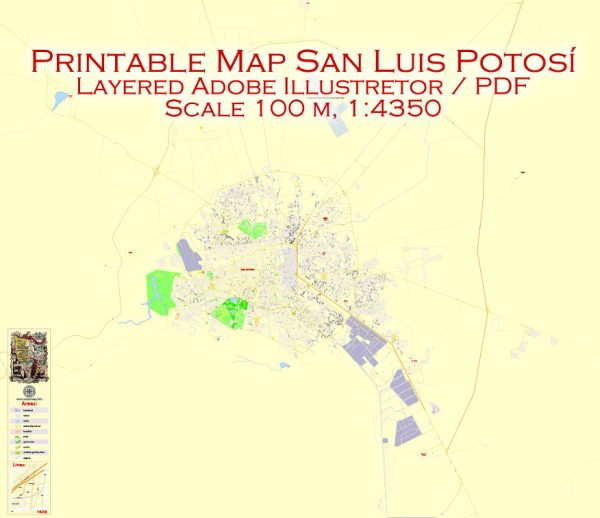San Luis Potosí, located in central Mexico, boasts a rich architectural heritage that reflects its history, culture, and economic significance. The city’s architecture is a blend of various styles, from colonial to neoclassical, and modern designs. Here’s a description of some of the key architectural features and styles you can find in San Luis Potosí:
- Colonial Architecture:
- The historic center of San Luis Potosí is characterized by well-preserved colonial architecture. Many buildings date back to the 16th and 17th centuries when the city was a prominent mining center.
- Spanish colonial influences are evident in the use of baroque and neoclassical elements, such as ornate facades, wooden balconies, and courtyards with fountains.
- The Caja del Agua, a historic aqueduct that supplied water to the city, is a remarkable example of colonial engineering and architecture.
- Baroque Style:
- Baroque architecture is prevalent in San Luis Potosí, known for its elaborate decoration, intricate carvings, and the extensive use of decorative elements like stucco.
- The Cathedral of San Luis Potosí (Catedral de San Luis Potosí) is a prime example of baroque architecture. Its façade is adorned with intricate reliefs and statues.
- Neoclassical Architecture:
- During the 19th century, the neoclassical style gained popularity in San Luis Potosí. This architectural style is characterized by its symmetry, classical columns, and geometric designs.
- The Government Palace (Palacio de Gobierno) features neoclassical elements and serves as the seat of the state government.
- Art Nouveau and Art Deco:
- In the early 20th century, Art Nouveau and Art Deco styles made their way into San Luis Potosí. You can find these architectural styles in various commercial and residential buildings, with their elegant curves and geometric patterns.
- Modern Architecture:
- The city has embraced modern architectural designs, especially in commercial and residential developments.
- Modern buildings often feature clean lines, glass facades, and contemporary design elements.
- Religious Architecture:
- Aside from the cathedral, San Luis Potosí is home to numerous churches and religious structures, reflecting the city’s strong Catholic heritage.
- The Temple of San Francisco, with its impressive baroque façade, is a notable religious building in the city.
- Plazas and Public Spaces:
- San Luis Potosí is known for its well-preserved plazas, such as Plaza de Aranzazú, Plaza de Fundadores, and Plaza de San Francisco. These spaces often feature decorative elements, fountains, and statues.
San Luis Potosí’s architectural landscape is a testament to the city’s historical and cultural significance, with a mix of styles that have evolved over the centuries. The blend of colonial, baroque, neoclassical, and modern designs creates a unique and captivating visual experience for residents and visitors alike.


 Author: Kirill Shrayber, Ph.D.
Author: Kirill Shrayber, Ph.D.